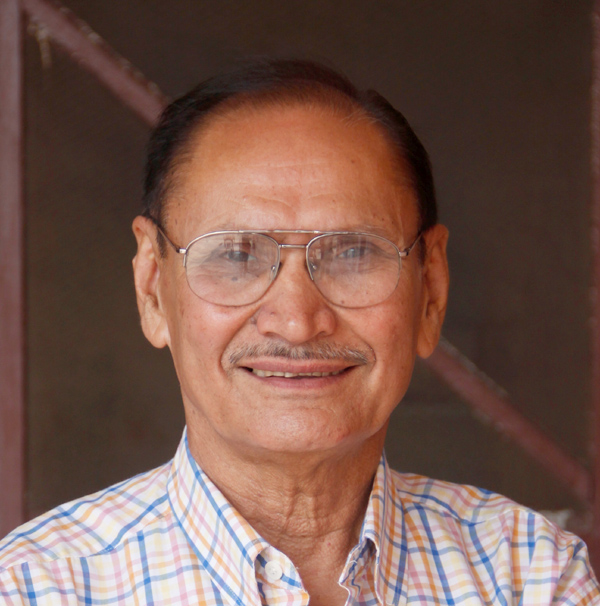Columns
Nepal is ready to welcome tourists, but where will they come from?
The country needs focused strategies for existing and potential source-markets.
Chandra Prasad Bhattarai
There were 1.17 million international tourists in Nepal in 2018. The average annual growth rate of arrivals in the five years from 2014 to 2018 was 17 percent. The latest available data for 2019 shows that the total international visitors in the first ten months was 975,557, higher by a mere 8 percent over the same period in 2018. This suggests that the total arrival in 2019, the data yet to come, is not likely to reach even the 1.2 million mark. The scenario indicates that receiving two million visitors in 2020 is not going to be an easy task.
Tourists do not visit Nepal simply because the government has campaigned for it. They have their priorities and preferences for any particular country. They plan their visits quite in advance, allocating valuable time and scarce financial resources wisely. Issues such as who inaugurated Nepal's national campaign, how colourful was the function, how many of the high-level dignitaries were present there, how many tourism festivals will be hosted across the country this year, and so on, will not contribute significantly to increasing the number of tourists. What matters is if the message effectively reached the targeted group of people in source markets.
India, China, USA, UK and Sri Lanka have been Nepal's largest source markets over the last couple of years. In 2018, almost 50 percent of the total international visitors in Nepal were collectively from those five countries alone. As source market behaviour is directly related to the changes in the numbers, its critical analysis could be the first stepping stone towards increasing the number of tourists.
Not all the tourists visit for the same purpose, nor are their spending capacities alike. In 2018, 60 percent of the total visitors in Nepal were for holiday and pleasure, 16 percent for adventure (including trekking and mountaineering), 14 percent for pilgrimage and 10 percent for other purposes. Their average spending was $44 per person a day.
Visitors' preferences for products and services differ according to their purpose of visit. While the large majority of American and British tourists love to visit Nepal for holidays, obviously expecting fun and pleasure; the majority of Sri Lankan tourists' purpose is religious. As high as eighty-six percent of the total Sri Lankan tourists in Nepal in 2018 visited Lumbini. The majority of Indian tourists visit Nepal for pilgrimage and pay homage to Lord Pashupatinath and Muktinath. A few of them are here in transit to Mansarovar in Tibet. A small portion of Indian tourists, mostly middle class, visit Nepal for fun.
China has been growing as a prominent tourism source market for the entire world. With the increase in their income in recent years, the number of outbound travellers has been growing substantially. In 2017, a total of 130 million Chinese travelled overseas. This number exceeds their 2011 figure by 85 percent. The Nepali hospitality industry also witnessed this growth; the number of Chinese guests jumped substantially from 32,272 in 2009 to 153,633 in 2018, indicating further growth potential. As for the UK market, a very insignificant portion of their total outbound tourists, 63,466 out of 72.3 million, visited Nepal in 2018. It suggests ample room for expansion if Nepali products and services are appealing to them.
Even in the case of tourists from any particular country, their likes and dislikes of products differ with their age, sex, culture, educational status, financial status, etc. The timings of travellers visiting Nepal also differ quite significantly, which is an added benefit to the country. While most of the Indian tourists visit Nepal in May and June, the preferred months for guests from the West are February-March and October- November. Chinese travellers generally love to visit Nepal throughout the year. However, their number drops down slightly in May and June.
The private sector, which already has developed a business relationship with those countries, obviously expects the government's facilitating role in strengthening it to expand the market sizes. Equally crucial in increasing the number of visitors is reaching new markets effectively. As a country with minimal scope for the development of the manufacturing sector, which possesses unparalleled opportunities in tourism, Nepal can simultaneously explore potential new markets in the global landscape.
The size of the global tourism market is growing every year in terms of the number of visitors, employment creation and contribution to the national economies. Informed people always would like to visit new places if they are appealing enough, and affordable. Nepal is yet to attract travellers from many geographical regions. Each of the Western European nations can be a high-spending tourism market for Nepal. Nepal can attract visitors from the Balkan countries, the Nordic states and the Gulf region as well.
In-depth country-specific analyses from several perspectives—covering the outbound number of visitors, length of stay, preferences and spending behaviour—from both existing as well as potential markets, would provide useful input in designing appropriate strategies. Periodic monitoring of such trends would tremendously help with marketing and promotion.
Finally, the tourism sector demands unyielding commitment and effective strategies from the government if it is serious enough in its development. The government needs to plan appropriate, country-specific marketing strategies focusing on both the kind of guests Nepal wants to have most and their exact requirements. At the same time, the authorities need to shift their priority from headcounts to increased earnings per tourist.
***
What do you think?
Dear reader, we’d like to hear from you. We regularly publish letters to the editor on contemporary issues or direct responses to something the Post has recently published. Please send your letters to [email protected] with "Letter to the Editor" in the subject line. Please include your name, location, and a contact address so one of our editors can reach out to you.




 14.12°C Kathmandu
14.12°C Kathmandu















